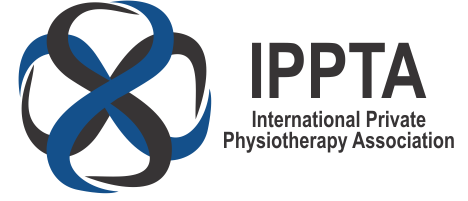In the middle of September many representatives from private practice in 19 different countries attended a hybrid meeting of IPPTA in Helsinki, Finland. The variations in travel restrictions, and vaccine status, meant that delegates of the following countries were in the room; Belgium, Netherlands, Switzerland, Finland, United States, UK, Denmark and Ireland and the other member countries joined by electronic platform to include; Austria, Sweden, South Africa, Spain, Lebanon, Colombia, New Zealand, Namibia, Australia and Germany. We had apologies from the following member countries Canada, Malta and Malawi. The delegate of Iceland attended virtually by invitation as a prospective new member. Very careful planning and technical knowhow from some of the IPPTA executive plus the dedication of members to defeat the time zone differences, led to a great meeting. It was clearer that we are “Far more united than the things that divide us”.
IPPTA is the subgroup of World Physiotherapy that represents the interests of private practitioners in members countries. In Helsinki, our focus for the business meeting was to concentrate one of our main IPPTA strategic goals, which is “to help private physiotherapy organisations help their members to determine and compete on quality and evidenced based value.
In order to achieve this, we had to share and discuss such marketplace and professional differences across the world as;
- Direct access for patients
- Autonomy of diagnosis and decisions re treatment pathways
- The position regarding remote consultations and treatment post pandemic
- How is treatment funded? The difference government and insurer models and the percentage or popularity of self-pay options
- What outcome data we collect, how we collect it, who owns it and how do we use it to demonstrate value
The number of comparisons, differences and situations are too great to explain in this simple overview but safe to say we learnt much from each other and enjoyed sharing each other’s challenges and successes.
What we all find difficult to do in our individual countries is effectively demonstrate “value” or “cost effectiveness”. For some, private practitioners can charge their own fee structure for their self-paying patients and conduct their own price agreements with insurers or other intermediaries, and for others fee structures and treatment parameters are mandated by funders whether they be governments or insurers.
For example, in the UK members collect outcome measures from our members using a standardised data collection tool which is an anonymised data set collected and analysed by our third-party partners, the University of Brighton, and where members are successful, awards Quality Assured Practitioner or Quality Assured Clinic status. This Tool includes both validated PROMS and PREMS and as the analysis measurement for the quality kitemarks does include number of treatments in its equation, this is the key to our analysis of cost effectiveness or value of any single treatment episode.
There is a massive collection system in the Netherlands and it will be very interesting to see how the analysis of this data will affect the direction of private practice treatment in the future.
Other countries with systems that are different, especially where they can more accurately determine cost data, are now beginning to think about how they can demonstrate the value of private physiotherapy interventions in many ways. The most notable of these studies has been carried out by The Australian Physiotherapy Association and published in its paper of October 1st 2020 “The value of Physiotherapy in Australia”.
To find out more about this paper, read it in its entirety or watch a short explanatory video visit https://australian.physio/economic-value.
APA summarised it as follows “The study found that treatments by physiotherapists deliver both health and economic benefits. Interventions are clinically effective and deliver net economic benefits, with quality-of-life improvements exceeding treatment costs”.
Other golden thread topics discussed at our IPPTA meeting included the emergence, over the last 12 to 18 months, of larger chains attempting to buy large numbers of clinics, something that the IPPTA delegates globally are calling the “Starbucks effect”. This is something worth watching for all member countries and will be revisited in the future.
The final wait and see issue discussed was the future of remote consultation and treatment. We know that many physios adapted to this form of treatment during various lockdowns, and some have continued in small number. Many more used this as an option for the patient, especially as a check-in, following a course of face-to-face treatment. We do know that the majority of private practitioners have returned to face- to- face treatment, which has led to some criticism for not embracing this option in a bigger way, instead of seeing it as the longer-term future for physiotherapy globally.
From our global discussions it seemed that all countries reported a return to face to face as the preferred option for their patients. The trend from global funders seems to be to pay a fee equal to or slightly less than the fee for face-to-face sessions. There is also a growth in the number of companies setting up in many countries just as telehealth providers of physiotherapy alone. We know these exist and some are very successful so once again it is “wait and see” as to where the market forces will take us all.
What is interesting is that all delegates agreed that ultimately, whether patients self-fund or choose an insurer, it is the detailed outcome and value data provided by the Physios and the patients, that will decide what sort of Physiotherapy.


